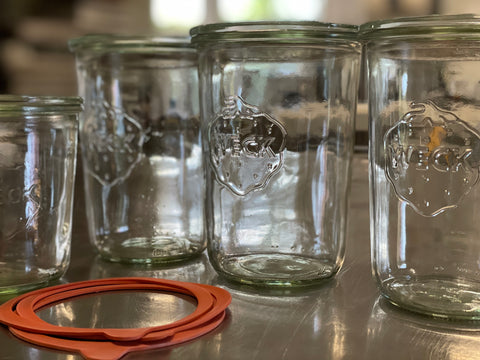Jar cooking: What it is and what is its use in pastry making
May 03, 2022
Vase cooking
Vaso-cooking is a technique that has gained a lot of attention in recent years, starting to be particularly used both in the kitchen and in pastry making, also thanks to the appreciation from famous names in the sector.
But what are the reasons behind this diffusion and how is it applied in pastry making? Let's find out!

What is jar cooking?
First of all, what is vasocottura? The (obvious) definition lies in the name: the cooking of food inside the glass jar, closed with the relative lid connected by a rubber gasket.
This method, whose effect is very similar to that of cooking in a pressure cooker, has one main characteristic: preserving the organoleptic properties of the food (flavour, consistency and aromas) as if it had just been cooked.
Furthermore, the aesthetic impact certainly makes a good impression on the table.
These characteristics, combined with the simplicity of production, have also led to its success in the home sector (it can be made with a traditional oven, microwave, bain-marie...) and in general a rediscovery in the food sector.
Yes, because jar cooking is not a recent invention. Do you know the grandmothers who have always made homemade preserves? Well, that's the principle.
Jar cooking in pastry making
But how is jar cooking used in pastry making?
The peculiarity that makes it mainly appreciated in sweet preparations is the conservation of the product (or Shelf life ) over time.
In fact, many products, once cooked and sealed, can maintain all the properties we talked about above unchanged for many months (if not years) depending on the type.
This is thanks to the vacuum that is created with the heat: in addition to contributing to faster cooking times (like the pressure cooking we mentioned before) it leads to the expulsion of the air through the seal, creating the vacuum at the internal.
This allows you to drastically reduce the deterioration of the product and all its characteristics at the end of cooking, preserving it just like it was freshly baked .
Applications of Vaso-cooking
Put like this it seems like the perfect cooking method for, theoretically, any dessert, guaranteeing perfect yield and very long shelf life, right? Almost.
Like all methods, it has its pros and cons, so we need to understand how to best apply it.
For example, vaso-cooking, as we have already said, preserves the product as if it had just been baked in all its characteristics. Including humidity.
This can therefore be a problem for certain desserts, such as some leavened products, which need to "dry" the excess humidity once out of the oven so as not to be too packed.
The problem can be addressed by cooking without a lid, then leaving it to rest and sealing it later with a second, shorter batch.
However, the limited exposed surface certainly does not make it an optimal solution, as almost all the product is in contact with the jar, not allowing ideal aeration.
On the contrary, however, vaso-cooking is perfect for "high humidity" preparations, of which an excellent example is babà in vaso-cooking .

In fact, it is naturally soaked thanks to the presence of the alcoholic syrup, allowing it to be kept exactly as it should be for a long time .
DISCOVER OUR POT-COOKED BABA' AND ALL THE FLAVORS AVAILABLE
However, be careful not to be fooled: in this case the correct conservation is given by the presence of alcohol in the syrup, which prevents the fermentation of the combined water-sugar.
So be careful when preparing products with non-alcoholic dips: the shell life in that case, even despite the vacuum, is drastically lower. It's a shame to find yourself with an "explosive" surprise...
The problem obviously does not arise with preparations such as creams or preserves, where the presence of water is marginal despite the high sugars.
In any case, the best suggestion we can give you is: experiment!
Give vent to your imagination and try as much as you can.
After all, glass jars for cooking are reusable, so what better excuse to have some fun in the kitchen?
Also pop into our Shop in the Babà in Vasocottura section, you won't regret it!




